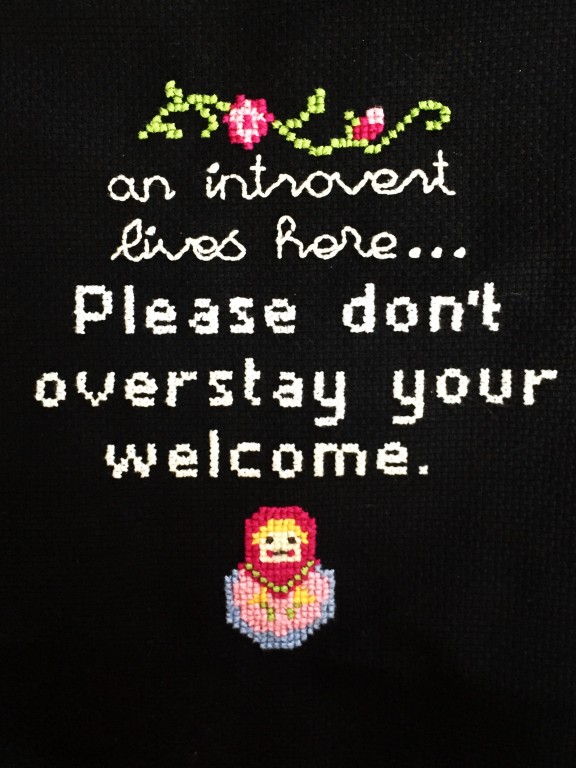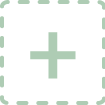Cross stitching is a relaxing and inexpensive hobby. It’s easy for beginners to learn; I’ll show you how.
Embroidery Floss
You’ll need embroidery floss in the colors indicated on your pattern. The benefit of 6-strand cotton floss is that you can separate the strands, to make stitches of different thicknesses. It’s also readily available and inexpensive. The downside to stranded floss is that it’s prone to tangling.
Perle cotton floss is a single thread floss. The higher the number, the thicker the thread. While you can purchase it in several weights, or thicknesses, you cannot divide the floss, so it is less versatile. However, it is more durable during the stitching process, with less fraying and tangling, making it easy to work with. It’s usually more expensive than the stranded floss.
You can also purchase floss on spools, like this set I got as a gift from Sulky. The downside is that it takes a bit more time to cut the multiple pieces of thread you’ll need each time you thread your needle. The upside is that the spools are great for storing or tossing in your sewing bag; they won’t knot up like stranded cotton floss does.
Any of these threads will work just fine, as long as they are color fast.
Fabric
Although you can stitch on just about any fabric, Aida fabric is the best choice for beginners. It has a grid weave with evenly spaced holes for your stitches. It comes in several counts, with the highest number giving you the smallest stitches. This black fabric is 14 count, and the white fabric is 18 count. Most patterns can be adapted to any count, but it will impact the finished size of the piece.
To figure out the finished size of any given cross-stitch chart, first count the number of graphed squares vertically and horizontally. Divide each number by the count of your fabric. For example, a chart that is 140 squares high by 210 squares wide stitched onto 14-count Aida Cloth would finish to 10″ high x 15″ wide. The same chart stitched onto 28-count fabric would be 5″ wide x 7.5″ high. Remember to leave at least 3 inches of extra fabric on all sides for the border.
Hoops
An embroidery hoop is comprised of two rings; the smaller one sits inside the larger one and is held in place by tightening the screw at top. They come in many sizes.
Needles
You’ll want to use a tapestry needle for cross stitching. These needles have larger eyes for threading multiple strands, and they are dull to minimize accidents and prevent snagging. Size 24 is a good choice. Don’t store your needle on the design area of your fabric, as it could potentially leave a mark.
Patterns
There are many free sewing patterns available online, and your local library probably has several books as well. I got this pattern from DeviantArt.com, created by the user Makibird-stitching. She has lots of great designs so be sure to check it out.
You can also create your own patterns, by printing off cross stitch graph paper, and coloring the squares to create your design. Additionally, there are some websites that allow you to upload an image and it will create a design for you. Or, print my “Shh” design and my “Introvert” design by clicking on the link above the supply box.
Prepping the Hoop
Let’s start by placing our fabric in the hoop. Separate the hoop pieces and center your fabric over the smaller hoop. Loosen the screw on the larger hoop, and place on top, sandwiching the fabric between the two hoops. Adjust as needed until the the weave of the fabric is straight, and the screw is centered at the top.Tighten the screw, then tug the fabric on all sides. Tighten again. Repeat until the fabric is held completely taut within the hoop.
Starting Your Stitches
Thread your needle with floss. I like to use a 3 or 4 strand weight for most of my stitching. It’s best to refrain from making knots in your thread, as it will keep your finished piece from lying flat. Instead, poke the needed up from behind, and hold the tail end of the thread in place while pulling the needle to the front. Still holding onto the tail, poke down from the front of the fabric. Then, poke up and pause, creating a loop. Feed the tail of the thread through this loop, then finish tugging the needle to pin the tail beneath the stitch. You’ll want to continue to anchor the tail by pinning it beneath 3 more stitches. Then, cut off any excess tail thread.
How To Stitch
Making a full cross stitch is simple. Poke up through the bottom left corner, and down through the upper right one the is diagonal from it. Come back up through the bottom right corner below it, then go down diagonally through the upper left.
Sometimes a pattern will require a half cross stitch, which is just one diagonal line. (If you have large areas to fill with the same color of thread, you may find it’s faster to sew with half stitches across the row, then work back the other way to complete the stitches.)
A three-quarters cross stitch has one diagonal line, plus a half line to the center of the stitch.
Patterns may have you add detail or outlines with a backstitch. This is done after you’ve finished the other stitching on the pattern. To backstitch, poke up through the fabric and down through the next hole. Then, backtrack to the hole before the beginning of your stitch. Poke up through that hole, and down through the first hole where you stitch began.
If you make a mistake, unthread your needle, then use the tip of the needle to gently loosen the stitch and pull it back through the holes. Alternately, you an use small scissors to snip the stitches and pick them out. You can clean up any loose strands with a piece of tape.
Finishing the Thread
When you only have a few inches of thread left on your needle, anchor your stitches by sliding the needle through several stitches on the back of your fabric, without poking through to the front. I like to do this twice to make it extra secure. Snip off the excess thread.
Finishing in the Hoop
You can leave your design in the hoop as an inexpensive way of displaying your cross stitch. Here’s how to do it.
How To Whip Stitch
To make a whip stitch, tie a knot in the floss and then slide your needle through the bottom side of the felt fabric only. Pull up to sandwich the knot between the layers of fabric, then slide the needle sideways through both layers of fabric. Working from the outside edge of the hoop, continue to poke down through the Aida fabric and up through the felt, creating a stitch that loops the edge of the fabrics. Continue all the way around the hoop, then finish by tying a knot between the layers of fabric.
Whether you decide to stitch something sweet, sassy, or subversive, cross stitching is a great way to relax and make something special.





 Finished?
Finished?